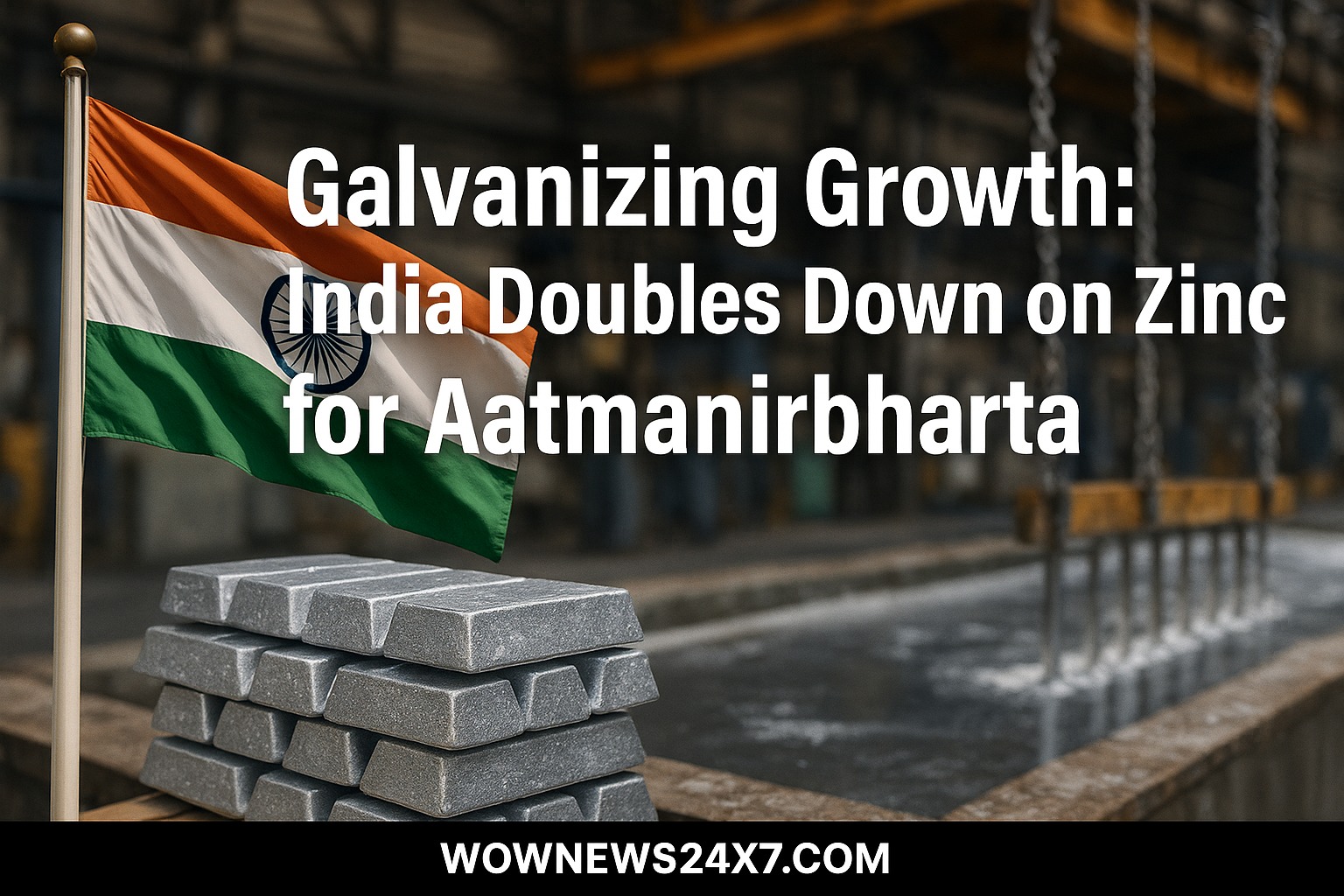India is making a decisive move to fortify its infrastructure and manufacturing backbone with a renewed focus on zinc—a metal that’s quietly become indispensable to the nation’s growth story. As the country marches toward its $30 trillion economic vision by 2047, zinc is emerging not just as a commodity, but as a strategic enabler of durability, sustainability, and self-reliance.
Key Highlights from Today’s Announcement
- India aims to double its zinc production capacity by 2030
- Zinc now meets 77% of India’s primary demand, reducing import dependency
- Corrosion costs India nearly 5% of its GDP annually—zinc is the antidote
- Zinc’s role spans infrastructure, EVs, renewables, and advanced energy storage
Why Zinc Matters More Than Ever
Zinc is the fourth most used metal globally, and its relevance in India is amplified by the country’s unique environmental challenges. From humid coastal zones to polluted urban centers, infrastructure faces relentless wear and tear. Zinc’s anticorrosive properties make it essential for protecting steel structures, thereby extending their lifespan and reducing maintenance costs.
India’s infrastructure boom—highways, bridges, smart cities, and renewable energy installations—demands materials that endure. Zinc, with its ability to shield steel from corrosion, is now central to this transformation.
India’s Zinc Ecosystem: A Quiet Revolution
Over the past two decades, India has built a robust zinc ecosystem that spans mining, refining, and downstream applications. This has enabled the country to meet nearly 77% of its primary zinc demand domestically.
- Refined zinc metal production has quadrupled since 2002
- The sector has also boosted silver output, vital for industrial and strategic use
- Zinc is now integral to power transmission, automotive, and energy storage sectors
Strategic Push: Doubling Production by 2030
To meet the surging demand from infrastructure and manufacturing, India is now focused on doubling its zinc production capacity by the end of this decade.
- This move aligns with the broader Aatmanirbhar Bharat vision
- It will reduce import dependency and stabilize domestic supply chains
- The initiative supports India’s climate goals by promoting recyclable and durable materials
Economic and Environmental Impact
Corrosion-related damage costs India close to 5% of its GDP annually. Zinc’s protective properties offer a direct solution to this economic drain.
- Galvanized steel fortified with zinc is now used in Vande Bharat trains and highway crash barriers
- Zinc is 100% recyclable, with 60% of all zinc ever produced still in use
- Its use in EV batteries and renewable energy systems supports India’s green transition
Looking Ahead: Zinc as a Strategic Asset
India’s zinc story is no longer just about mining—it’s about strategic foresight.
- Zinc will play a pivotal role in high-speed rail corridors, smart cities, and EV infrastructure
- Its versatility across agriculture, electronics, and health makes it a multi-sectoral asset
- As industrial production scales up, zinc ensures longevity without compromising sustainability
Conclusion
India’s commitment to Aatmanirbharta in zinc is a powerful signal of its intent to build not just faster, but smarter and stronger. By investing in zinc, the country is laying the foundation for infrastructure that lasts, industries that thrive, and a future that’s both self-reliant and sustainable.
Source: ETManufacturing,
